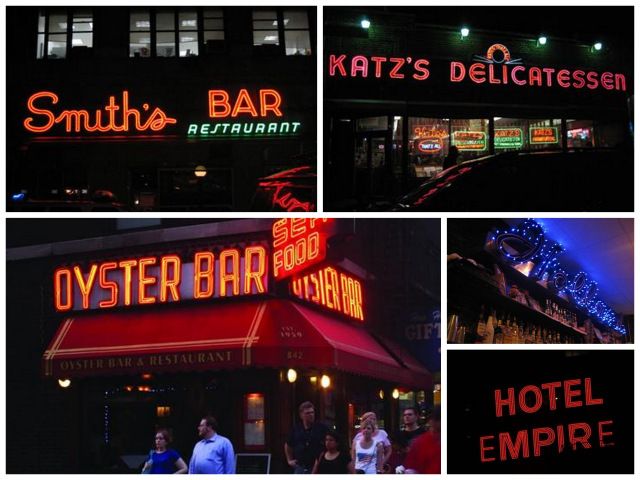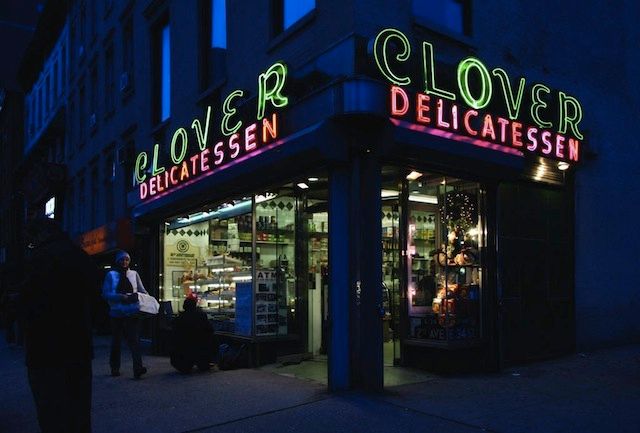Last-Minute NYC Holiday Gift Guide 🎁
We’ve created a holiday gift guide with presents for the intrepid New Yorker that should arrive just in time—



You’ve seen them everywhere, but probably haven’t given them much thought. Though they once prominently lit up the night, New York’s neon signs are now a fading part of the cityscape. But have you ever wondered about the hidden history behind the signs, and about their gradual disappearance? Thomas Rinaldi’s book New York Neon, released by Norton, tells the story of New York’s neon signs based on his five-year quest to photograph and document them before they succumb to the ravages of time and perhaps disappear entirely.
We’re exploring the West Village and its vintage neon signs with a tour on May 18th. But before that, let’s delve into a bit of the backstory:
Tour of West Village Vintage Neon Signs!
Rinaldi begins with the history of illuminated signs, from shadowbox gas lit signs to signs lit by Edison’s incandescent bulbs to the discovery of neon gas by English scientists Sir William Ramsay and Morris William Travers, and Georges Claude’s patenting of neon lights. Claude’s first commercially used neon sign probably appeared in Paris between 1910 and 1912, but historians are still debating the exact date. His first neon sign appeared in New York City in 1924, when he opened Claude Neon Lights, Inc. In the 1920s, neon quickly caught on as many well established companies began using neon signs. The signs became icons of prosperity and progress in the roaring ’20s, when bright lights added to the glitz of the New York nightlife.

Photo by Thomas Rinaldi
As Rinaldi writes, neon signs began to decline with the advent of fluorescent lights, which were less expensive and required less maintenance. Soon enough, the big companies switched to signs that used plexiglass illuminated by fluorescent lights, and neon signs began to take on a seedy connotation. In the span of twenty years, they had gone from characterizing Berenice Abbott’s New York of sparkling skyscrapers to Weegee’s gritty New York of cigarette butts and nighthawks. Today neon signs seem like relics of a not-so-distant past, and the shops that still use them are often family-run businesses that have been in the same neighborhood for generations. Many of the signs are partially broken or illuminated only sporadically, making the need for their documentation important.
Rinaldi’s book offers a fascinating account of the neon signs’ history, as well as information about how they’re designed and produced. Finally, the book contains an exhaustive catalogue of both the lost and remaining signs. To get this information, Rinaldi visited the proprietors of shops that still have neon signs, sometimes traveling to the farthest corners of the city. This tended to be the most difficult, but also–as he said at yesterday’s book talk at the Skyscraper Museum–the most rewarding aspect of the project.
Buy New York Neon here. Check out New York Neon’s website and Rinaldi’s blog. Rinaldi also leads a tour of West Village’s Vintage Neon Signs!
Tour of West Village Vintage Neon Signs!
Get in touch with the author @lauraitzkowitz.
Subscribe to our newsletter